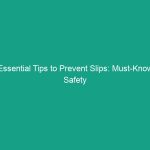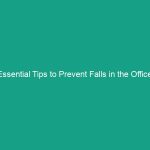Introduction
Good morning team,
Today, we’re diving into an essential topic that affects all of us who work with aerial lifts: Essential Fall Protection for Aerial Lifts: Master Harnesses and Lanyards. Understanding how to effectively use harnesses and lanyards is crucial for your Safety and the Safety of your coworkers when working at heights.
Why is this topic important? Falls are one of the leading causes of workplace injuries and fatalities. By mastering the use of fall protection equipment, we can significantly reduce the risk of accidents and ensure a safer work Environment.
Understanding Essential Fall Protection for Aerial Lifts
So, what exactly do we mean by essential fall protection? It refers to the systems and equipment designed to prevent falls from heights, particularly when using aerial lifts. This includes harnesses, lanyards, and other Personal Protective Equipment (PPE).
Fall protection is not just about having the right gear; it’s about understanding how to use it properly. Many workers believe that simply wearing a harness is enough, but without the correct Procedures and Training, even the best equipment can fail to protect you.
Let’s clear up some common misconceptions:
- Myth: All harnesses are the same. Fact: Harnesses come in different types and sizes, and selecting the wrong one can lead to serious safety risks.
- Myth: It’s okay to wear a harness loosely. Fact: A properly fitted harness is crucial for it to function effectively.
Key Hazards, Risks, and Safety Considerations
When working with aerial lifts, several Hazards can lead to serious injuries:
- Falls from Heights: The most obvious risk when using aerial lifts is the potential for falls. Even a short distance can result in severe injuries.
- Equipment Malfunction: Faulty or poorly maintained equipment can fail during Operation.
- Improper Use of Equipment: Not using harnesses and lanyards correctly can lead to accidents.
Ignoring these safety protocols can have real-world consequences, such as injuries that could lead to lost workdays, medical expenses, and even fatalities. We must take these risks seriously and commit to using fall protection measures at all times.
Best Practices, Procedures, & Actionable Advice
To ensure your safety while using aerial lifts, follow these essential Best Practices:
1. Choose the Right Harness
Select a harness that fits properly and is appropriate for the type of work you are doing. Ensure that:
- The harness is rated for your weight, including tools and equipment.
- It has adjustable straps for a snug fit.
- It is free from any damage or wear.
2. Properly Fit Your Harness
Before climbing into the aerial lift, ensure that your harness is correctly fitted:
- Adjust all straps to ensure a secure fit without excess slack.
- Check that the D-ring is positioned at the center of your back.
- Make sure that all buckles are secured and locked.
3. Use Lanyards Correctly
Lanyards are crucial for connecting your harness to the aerial lift’s anchor point. Here’s how to use them properly:
- Always attach your lanyard to a designated anchor point that is rated for fall protection.
- Inspect your lanyard for any signs of damage before each use.
- Ensure that the lanyard is the correct length to allow for movement but not so long that it increases your fall distance.
4. Conduct a Pre-Operation Safety Check
Before operating an aerial lift, always conduct a safety inspection:
- Check the lift for any visible damage or mechanical issues.
- Ensure all safety features are functioning.
- Confirm that you have your fall protection equipment ready and in good condition.
Real-World Incident: Importance of Compliance
Consider the case of a worker who fell from an aerial lift due to improper harness use. The worker was wearing a harness but had not secured it properly. The fall resulted in serious injuries and highlighted the critical importance of proper training and compliance with safety protocols. This incident serves as a powerful reminder of why we must adhere to safety practices consistently.
Regulations, Standards, and Compliance
Various Regulations govern the use of fall protection equipment. Understanding these is vital:
- OSHA Standards: The Occupational Safety and Health Administration (osha) provides clear guidelines regarding fall protection requirements when working at heights.
- ANSI Standards: The American National Standards Institute outlines specifications for harnesses and lanyards to ensure safety and reliability.
- Company-Specific Policies: Always adhere to our company’s safety policies and procedures regarding aerial lift operations.
Compliance with these standards not only protects you but also your coworkers. It’s crucial to understand that neglecting these regulations can lead to severe penalties and increase the risk of accidents.
Employee Engagement & Discussion
Now that we’ve covered the importance of fall protection, let’s open the floor for discussion:
- What challenges have you experienced when using harnesses or lanyards?
- Do you feel confident in your ability to properly use fall protection equipment?
- What additional training might help improve our safety practices?
Your feedback is invaluable, and by discussing these issues, we can work together to improve our safety protocols.
Conclusion & Key Takeaways
In conclusion, mastering fall protection for aerial lifts, particularly the use of harnesses and lanyards, is crucial for your safety and the safety of your team. Remember the key points:
- Always choose the right harness and ensure it fits properly.
- Use lanyards correctly and check equipment before use.
- Conduct thorough safety checks on aerial lifts.
- Stay informed about safety regulations and compliance.
Let’s commit to applying these practices in our daily work. Your safety is our top priority, and by following these guidelines, we can create a safer workplace for everyone. Thank you for your attention and dedication to safety!


